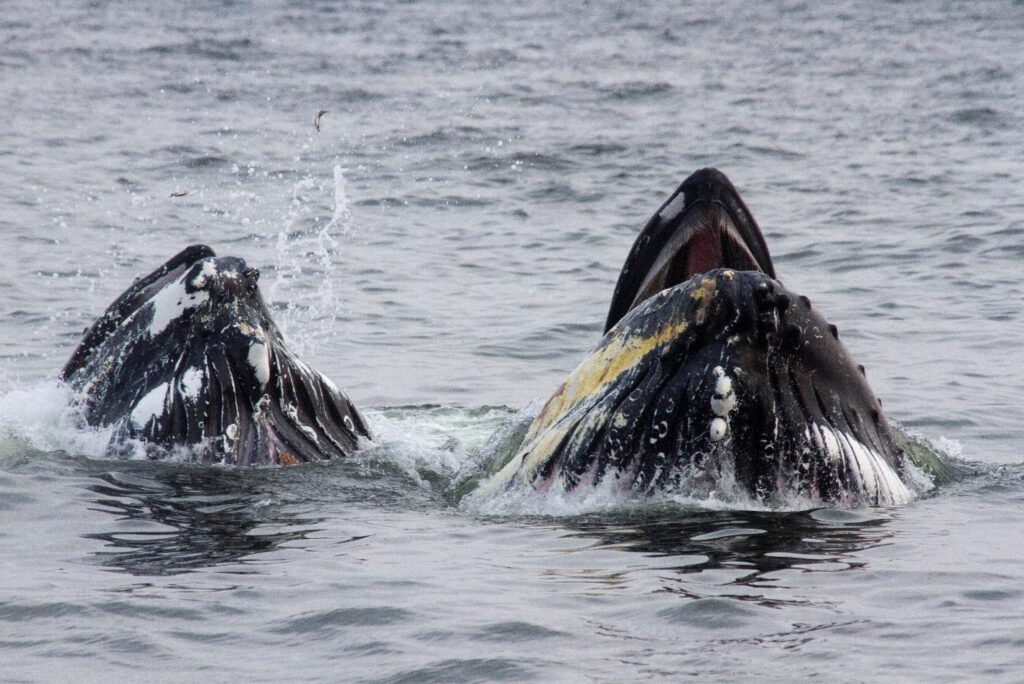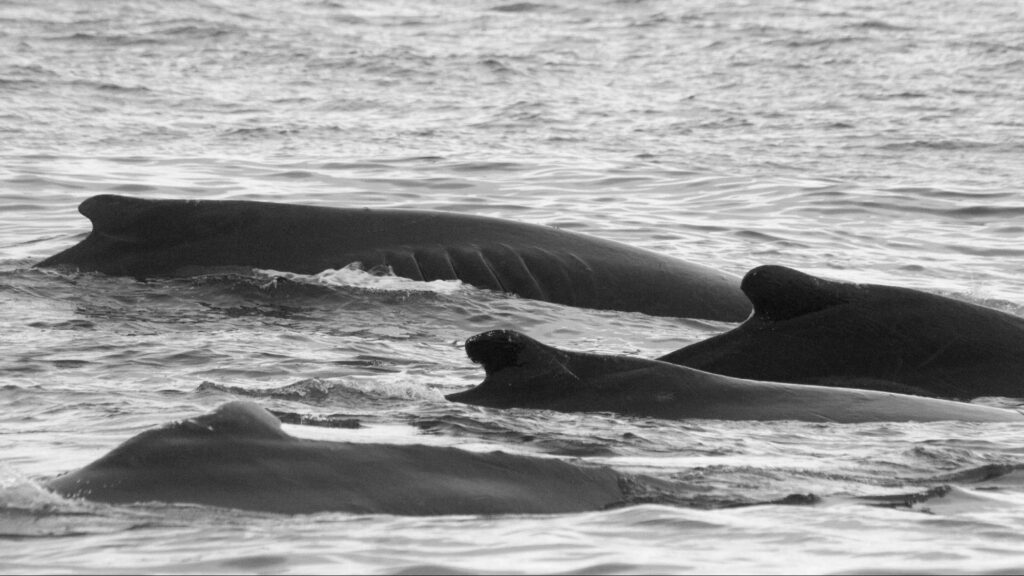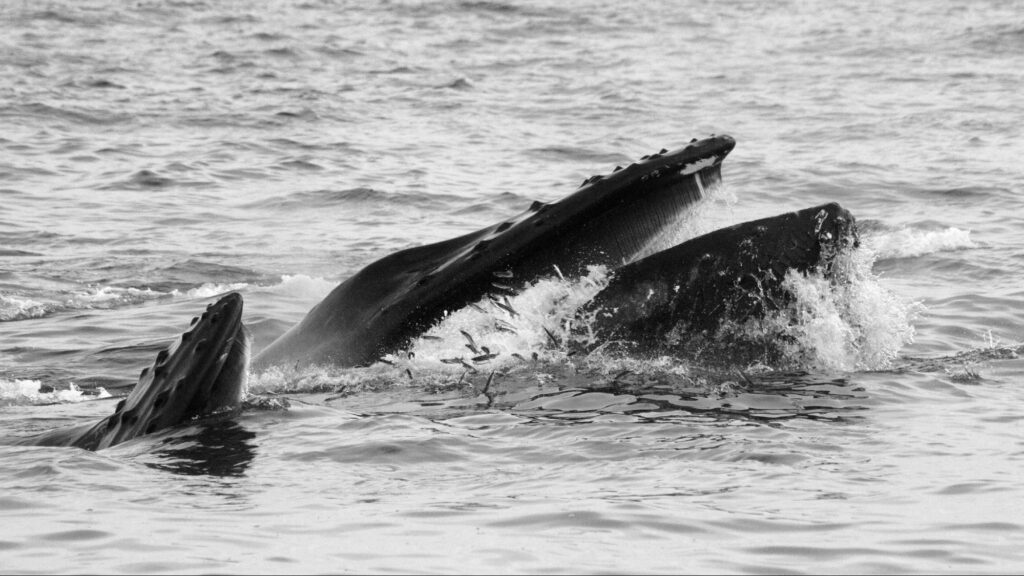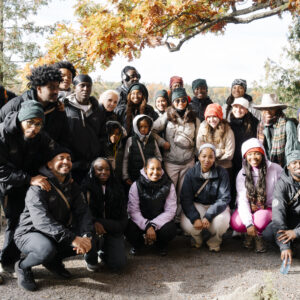The Humpback Whale: Singer and Fisher Extraordinaire
Although the long Newfoundland winter has just ended and scattered flurries are still occasionally falling here and there, whale watchers across the island are not minding the late snow too much. Instead, they are gearing up as whale season is upon us.
With the summer approaching, whale enthusiasts have been cleaning their camera gear and will soon start monitoring the capelin calendar to anticipate the arrival of these small fishes close to the coast. At this very time, up to 10,000 humpback whales are eagerly swimming towards the shores of the rocky island and looking forward to a banquet of fish. (The humpback whale is known as iihtuup in the Nuu-chah-nulth language of BC; its scientific name is Megaptera novaeangliae).
My favorite humpback whale watching spot in Newfoundland and Labrador is along the beach in Saint Vincent’s-St. Stephen’s-Peter’s River, located on the southern tip of the Avalon Peninsula. Here, schools of capelin come close to the shore to spawn every summer, between late June and early July, attracting scores of humpback whales (Fig. 1).
This is a spectacular place to experience these majestic animals — and you don’t even need a zoom lens to capture a great shot. Due to the unique geography, the whales are feeding right off the shore, perhaps only 10 meters from their keen observers. Whale watching from the shore is the least invasive way to observe these incredible animals — which can be disturbed or injured by boats — and it comes with all the comforts you might want to bring to the beach.

Figure 1. Humpback whales feeding on capelin in Saint Vincent’s-St. Stephen’s-Peter’s River (Newfoundland and Labrador). Photo: Simone Cominelli.
POPULATIONS AND MIGRATION
Humpback whales get their name from their low, stubby, and broad dorsal fin, which has a characteristic ”hump” (Fig. 2). Humpback whales inhabit almost every ocean in the world, with the exception of some equatorial regions and the high Arctic. Humpback whales undergo one of the longest known animal migrations, traveling up to 5,000 miles from their breeding grounds towards more productive northern cold waters, looking to replenish their fat reserves on banquets of fish and krill (small crustaceans). The North Atlantic Ocean hosts two distinct populations: one with breeding grounds located in the Caribbean, and one located in Cape Verde. Every year close to mid-April, the members of the Caribbean population start migrating towards the East Coast of Canada, reaching the shores of Newfoundland and even Greenland. Towards the end of September, the whales will leave once again and return to their southern breeding grounds.

Figure 2. “Humps” of the humpback whale. A group of four whales showing their dorsal fins with the characteristic humps. In this photo, you can see the diversity in shapes of the dorsal fin in humpback whales. One of the whales — the one in the far back — shows a series of injuries most likely caused by a propeller. Saint Vincent’s-St. Stephen’s-Peter’s River (Newfoundland and Labrador). Photo: Simone Cominelli
EXPERT FISHERS AND AMAZING SINGERS
These animals are expert fishers — many populations of humpback whales have developed specific strategies to maximize their success in filling their large bellies. Humpback whales eat their food using a strategy called lunge feeding, where the whale dives under a school of fish or krill and uses its powerful tail (called fluke) to thrust forward with their mouth wide open while resurfacing. This lets in both food and water in the whale’s mouth, which can expand to accommodate a huge volume of water (up to 19,000 liters) thanks to the presence of throat grooves (a series of folds in their skin). The water is then pushed out through a fine mesh filter (the baleens) leaving the whale with a mouthful of food to swallow.
Help us protect wildlife like humpback whales — become an Ocean Defender!
In areas where food is abundant, groups of as many as 25 individuals can coordinate their actions to concentrate fish schools and feed on them. The most famous of these coordinated behaviors is bubble net feeding – a strategy adopted by humpback whales in the North Pacific. However, our whales in Newfoundland also have developed their own feeding strategies. Whales are often seen lunging side by side in groups of 2 to 5 individuals, a strategy where the overspill of fish leaving the mouth of a lunging whale is caught by another whale lunging shortly after (figure 3).
Such coordination requires great communication skills, and humpback whales are amongst the chattiest animals found in the ocean. During the breeding seasons, males produce complex series of vocalizations called songs, which are thought to be a key component of the whales’ mating behavior. Humpback whale songs are constantly evolving, with new themes being added and others becoming less common over time. A song can last from 5 to 30 minutes and can be repeated continuously for as long as 24 hours. Humpback whale sounds, however, are not limited to songs. Sound production is a key element of humpback behavior in most of their activities. Mating, feeding, and social interactions are all accompanied by specific sounds. These sounds include “grunts,” “groans,” “trills,” and “whines,” among many others. The number of humpback whale sounds recorded by researchers across the globe is constantly growing and could easily include hundreds of different vocalizations. If you are curious about the sounds of humpback whales and many other marine animals, you can learn more by visiting the Discovery of Sound in the Sea website.

Figure 3. Humpback whales feeding in “tandem.” Whales lunge next to each other in rapid succession catching the overspill of capelin escaping from the mouth of their companions. Saint Vincent’s-St. Stephen’s-Peter’s River (Newfoundland and Labrador) Photo: Simone Cominelli
PAST AND CURRENT THREATS
The recovery of humpback whales is one of the most successful conservation stories we have ever witnessed, highlighting the importance of marine protected areas and international regulations for the conservation of marine life. Currently, most humpback whale populations are strong in numbers, but this has not always been the case. During the time of commercial whaling, many populations were decimated, and the species became threatened by extinction. Things started to change in 1986, when the International Whaling Commission introduced a global ban on commercial whaling. Since then, 10 out of the 14 known humpback whale populations have rebounded and exceeded their pre-whaling numbers, including the population that visits the shores of Newfoundland.
Nonetheless, humpback whales still face numerous threats, including collisions with ships, entanglement in fishing gear, disturbance from noise pollution, and increasing challenges in finding food due to climate change (which can change the distribution and abundance of their prey species).
Entanglement in fishing gear is a common threat for whales in Newfoundland and Labrador. Since 1979, the Newfoundland and Labrador-based Whale Release and Stranding (WRS) group has been active on the water, responding to accidental entrapments of marine animals in fishing gear and stranded animals. The objectives of the program are to rescue entangled animals while minimizing damage to fishing gear and downtime for fishers, protecting both our beloved megafauna and the livelihood of many communities in Newfoundland and Labrador. Between 1979 and 2008, approximately 80% of entangled whales in Newfoundland and Labrador were humpbacks. In 2025 alone, Whale Release and Strandings has already rescued three animals. Healthy and thriving marine mammal populations are an indicator of a healthy and thriving ocean that we can keep enjoying together. If you spot an entangled whale or sea turtle, please contact:
- Whale Release and Strandings (Newfoundland and Labrador) at 1 (888) 895-3003;
- Canadian Whale Institute (CWI) (Maritimes) at 1-866-567-6277;
- Marine Education and Research Society (British Columbia) at 1-800-465-4336.
Want to help Canadian species like the humpback whale and more? Stay tuned with the latest in Canadian nature by subscribing for email updates. You’ll receive regular updates about what we’re doing to protect Canadian nature and how you can help.



